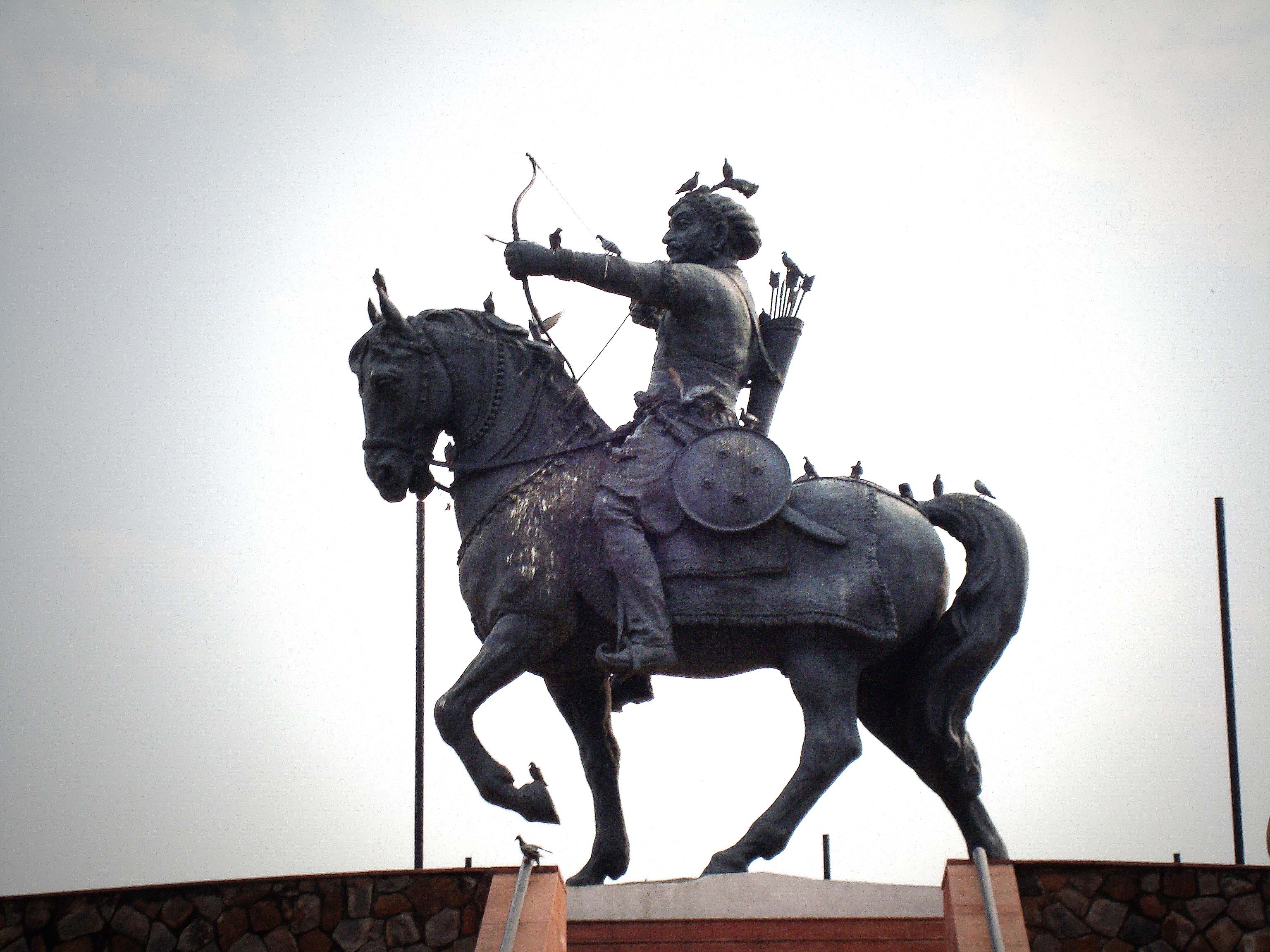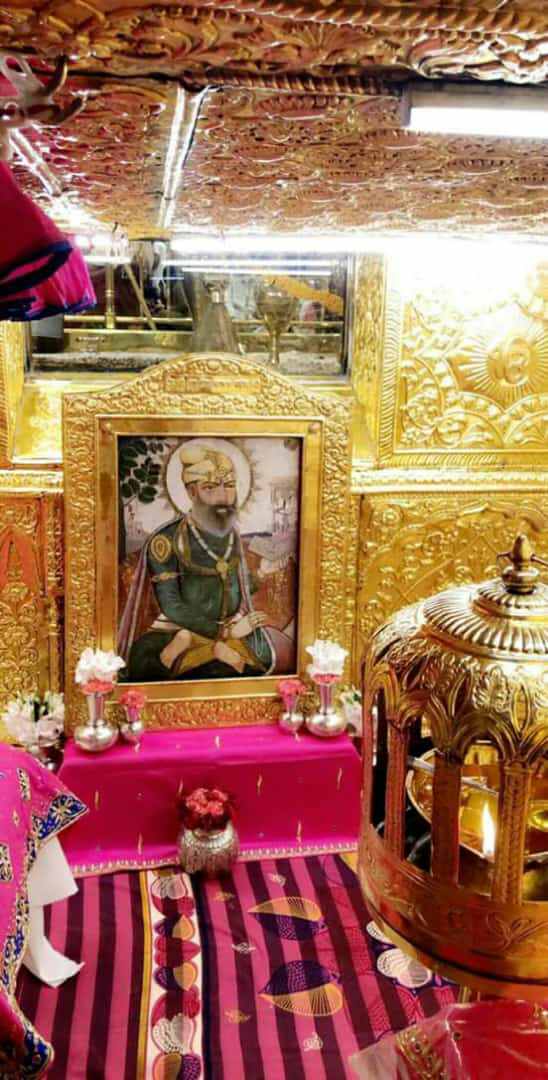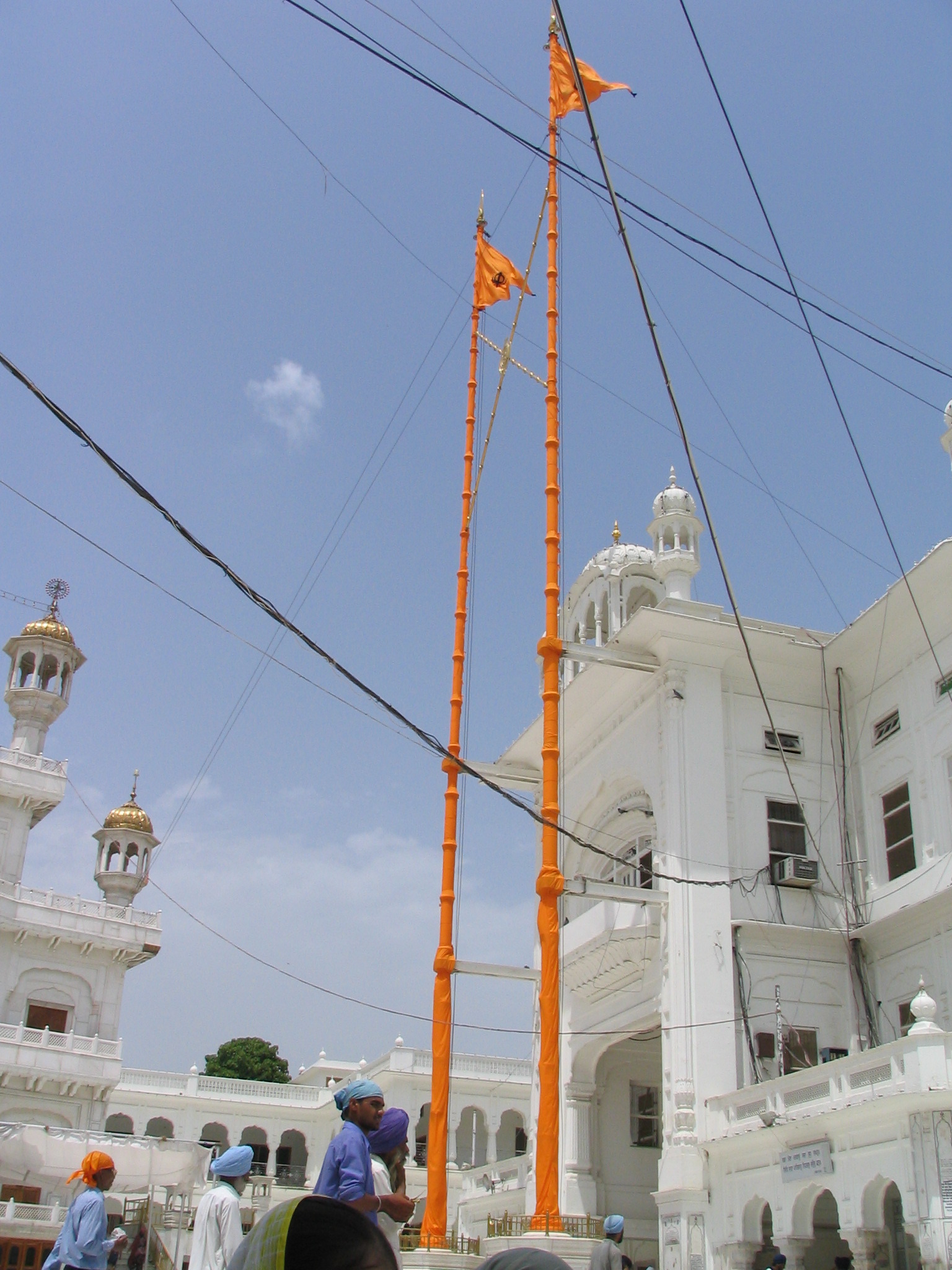|
Tarain
Taraori, or Tarori or Tarawari, as it is sometimes called in the local dialect, is a town (Municipal committee) in Nilokheri Tehsil of Karnal district in the Indian state of Haryana. It is situated off NH-44, 14 km north of Karnal. The name ''Taraori'' is derived from the word '' Tarai''. History It was at Tarawadi that in 1191 the Hindu Rajput army under Prithviraj Chauhan defeated the invading army of Muhammad of Ghaur at the First Battle of Tarain. The following year, Ghauri invaded again and defeated Prithviraj's forces here, at the Second Battle of Tarain. A wall around the fort is now in a dilapidated condition. A mosque and a tank, said to be the works of Aurangzeb, are still in existence. Taraori is also known as Tarain. Demographics India census, Taraori had a population of 22,205. Males constitute 54% of the population and females 46%. Taraori has an average literacy rate of 62%, higher than the national average of 59.5%: male literacy is 66%, and female ... [...More Info...] [...Related Items...] OR: [Wikipedia] [Google] [Baidu] |
Muhammad Of Ghaur
Mu'izz ad-Din Muhammad ibn Sam ( fa, معز الدین محمد بن سام), also Mu'izz ad-Din Muhammad Ghori, also Ghūri ( fa, معز الدین محمد غوری) (1144 – March 15, 1206), commonly known as Muhammad of Ghor, also Ghūr, or Muhammad Ghori, also Ghūri, was a ruler from the Ghurid, Ghurid dynasty based in what is today Afghanistan who ruled from 1173 CE to 1206 CE. He extended the Ghurid dominions eastwards and laid the foundation of Islamic rulers in India, Islamic rule in the Indian Subcontinent, which lasted after him for nearly half a millennium. During his joint reign with his brother Ghiyath al-Din Muhammad, Ghiyasuddin Ghori (r. c. 1163–1203), the Ghurids reached the epogee of their territorial expansion. During his early military career as a prince and governor of the southern tract of the Ghurid Empire, Muhammad subjugated the Ghuzz Turks, Oghuz tribe after multiple raids and captured Ghazna where he was crowned by his brother Ghiyath al-Din ... [...More Info...] [...Related Items...] OR: [Wikipedia] [Google] [Baidu] |
Prithviraj Chauhan
Prithviraja III (IAST: Pṛthvī-rāja; reign. – 1192 CE), popularly known as Prithviraj Chauhan or Rai Pithora, was a king from the Chauhan (Chahamana) dynasty who ruled the territory of Sapadalaksha, with his capital at Ajmer in present-day Rajasthan. Ascending the throne as a minor in 1177 CE, Prithviraj inherited a kingdom which stretched from Thanesar in the north to Jahazpur (Mewar) in the south, which he aimed to expand by military actions against neighbouring kingdoms, most notably defeating the Chandelas. Prithviraj led a coalition of several Rajput kings and defeated the Ghurid army led by Muhammad Ghori near Taraori in 1191 AD. However, in 1192 CE, Ghori returned with an army of Turkish mounted archers and defeated the Rajput army on the same battlefield. Prithviraj fled the battlefield, but was captured near Sirsa and executed. His defeat at Tarain is seen as a landmark event in the Islamic conquest of India, and has been described in several semi-legendar ... [...More Info...] [...Related Items...] OR: [Wikipedia] [Google] [Baidu] |
Second Battle Of Tarain
The Second Battle of Tarain was fought in 1192 between the Ghurid forces of Muhammad Ghuri and the Rajput Confederacy of Prithviraj Chauhan. It took place near Tarain (modern Taraori), which is , north of Delhi. The battle ended in a decisive victory for the invading Ghurids and their successful penetration in north Indian plain. The battle is regarded as a watershed event in Medieval India history as it led to the destruction of Rajput powers for a while and laid the foundation of Muslim rule in North India, which led to the establishment of Delhi Sultanate. Background Prithviraj Chauhan's forces had defeated the Ghurids at the First Battle of Tarain in 1191. The Ghurid king Mu'izz al-Din, who was seriously injured in the battle, returned to Ghazni, and made preparations to avenge his defeat. Historians generally date the second battle of Tarain to 1192, although there is a possibility that it happened in late 1191. Size of the forces According to the 16th-17th cent ... [...More Info...] [...Related Items...] OR: [Wikipedia] [Google] [Baidu] |
First Battle Of Tarain
The First Battle of Tarain, also spelt as the First Battle of Taroari, was fought in 1191 between the invading Ghurid army led by Muhammad of Ghor and the Rajput confederacy led by Prithviraj Chauhan, near Tarain (modern Taraori in Haryana, India). The battle ended in decisive victory for the Rajputs; however, Muhammad of Ghor managed to escape and returned to Ghazni. After the Ghurid armies were routed, they retreated to the Ghazni and left garrison of 2,000 soldiers under Zia ud-Din Tulaki to secure the fort of Tabarhind (present day Bhatinda) to delay the Rajput army and was successful in keeping them at bay for thirteen months, while Muhammad of Ghor, during these months, raised a stronger army of 120,000 men, and invaded again, leading to the Second Battle of Tarain. Sources The contemporary sources for the battle include ''Tajul-Ma'asir'' of Hasan Nizami (on the Ghurid side) and Jayanaka's ''Prithviraja Vijaya'' (on the Chahamana side). Later sources for the battle i ... [...More Info...] [...Related Items...] OR: [Wikipedia] [Google] [Baidu] |
Tarain
Taraori, or Tarori or Tarawari, as it is sometimes called in the local dialect, is a town (Municipal committee) in Nilokheri Tehsil of Karnal district in the Indian state of Haryana. It is situated off NH-44, 14 km north of Karnal. The name ''Taraori'' is derived from the word '' Tarai''. History It was at Tarawadi that in 1191 the Hindu Rajput army under Prithviraj Chauhan defeated the invading army of Muhammad of Ghaur at the First Battle of Tarain. The following year, Ghauri invaded again and defeated Prithviraj's forces here, at the Second Battle of Tarain. A wall around the fort is now in a dilapidated condition. A mosque and a tank, said to be the works of Aurangzeb, are still in existence. Taraori is also known as Tarain. Demographics India census, Taraori had a population of 22,205. Males constitute 54% of the population and females 46%. Taraori has an average literacy rate of 62%, higher than the national average of 59.5%: male literacy is 66%, and female ... [...More Info...] [...Related Items...] OR: [Wikipedia] [Google] [Baidu] |
Karnal
Karnal ( is a city located in the state of Haryana, India and is the administrative headquarters of Karnal District. It was used by East India Company army as a refuge during the Indian Rebellion of 1857 in Delhi. The Battle of Karnal between Nader Shah of Persia and the Mughal Empire took place in this city in 1739. Etymology The city associates itself with the mythological character Karna from the Indian epic Mahabharata. A tank in the city also bears the name Karna Tal and a city gate is called Karna gate. History Ancient At the end of 6th century A.D., the area was under the rule of the Vardhanas of Thanesar. The 7th century was a period of eclecticism in religion, Buddhism was declining and Hinduism was resurging in the Indo-Gangetic plains. The region was under Kanauj rule under the Pala Emperor of Bengal (770-810 A.D.). The authority of Mihira Bhoja (836-885 A.D.), the Pratihara ruler of Kanauj penetrated as far as Pehowa, including Karnal. Medieval The Tomaras ... [...More Info...] [...Related Items...] OR: [Wikipedia] [Google] [Baidu] |
WikiProject Indian Cities
A WikiProject, or Wikiproject, is a Wikimedia movement affinity group for contributors with shared goals. WikiProjects are prevalent within the largest wiki, Wikipedia, and exist to varying degrees within sister projects such as Wiktionary, Wikiquote, Wikidata, and Wikisource. They also exist in different languages, and translation of articles is a form of their collaboration. During the COVID-19 pandemic, CBS News noted the role of Wikipedia's WikiProject Medicine in maintaining the accuracy of articles related to the disease. Another WikiProject that has drawn attention is WikiProject Women Scientists, which was profiled by '' Smithsonian'' for its efforts to improve coverage of women scientists which the profile noted had "helped increase the number of female scientists on Wikipedia from around 1,600 to over 5,000". On Wikipedia Some Wikipedia WikiProjects are substantial enough to engage in cooperative activities with outside organizations relevant to the field at issue. For ex ... [...More Info...] [...Related Items...] OR: [Wikipedia] [Google] [Baidu] |
Sikhism
Sikhism (), also known as Sikhi ( pa, ਸਿੱਖੀ ', , from pa, ਸਿੱਖ, lit=disciple', 'seeker', or 'learner, translit=Sikh, label=none),''Sikhism'' (commonly known as ''Sikhī'') originated from the word ''Sikh'', which comes from the Sanskrit root ' meaning "disciple", or ' meaning "instruction". Singh, Khushwant. 2006. ''The Illustrated History of the Sikhs''. Oxford University Press. . p. 15.Kosh, Gur Shabad Ratnakar Mahan. https://web.archive.org/web/20050318143533/http://www.ik13.com/online_library.htm is an Indian religion that originated in the Punjab region of the Indian subcontinent,"Hinduism, Buddhism, Jainism and Sikh originated in India." around the end of the 15th century CE. It is the most recently founded major organized faith and stands at fifth-largest worldwide, with about 25–30 million adherents (known as Sikhs) .McLeod, William Hewat. 2019 998 Sikhism developed from the spiritual teachings of Guru Nanak (1469–1539), the faith's first gu ... [...More Info...] [...Related Items...] OR: [Wikipedia] [Google] [Baidu] |
Guru Teg Bahadur
Guru Tegh Bahadur ( Punjabi: ਗੁਰੂ ਤੇਗ਼ ਬਹਾਦਰ (Gurmukhi); ; 1 April 1621 – 11 November 1675) was the ninth of ten Gurus who founded the Sikh religion and the leader of Sikhs from 1665 until his beheading in 1675. He was born in Amritsar, Punjab, India in 1621 and was the youngest son of Guru Hargobind, the sixth Sikh guru. Considered a principled and fearless warrior, he was a learned spiritual scholar and a poet whose 115 hymns are included in ''Sri Guru Granth Sahib,'' the main text of Sikhism. Guru Tegh Bahadur was executed on the orders of Aurangzeb, the sixth Mughal emperor, in Delhi, India.;;; Sikh holy premises Gurudwara Sis Ganj Sahib and Gurdwara Rakab Ganj Sahib in Delhi mark the places of execution and cremation of Guru Tegh Bahadur. His martyrdom is remembered as the ''Shaheedi Divas of Guru Tegh Bahadur'' every year on 24 November. Biography Early life Guru Tegh Bahadur was the youngest son of Guru Hargobind, the sixth guru: Gur ... [...More Info...] [...Related Items...] OR: [Wikipedia] [Google] [Baidu] |
Gurdwara
A gurdwara (sometimes written as gurudwara) (Gurmukhi: ਗੁਰਦੁਆਰਾ ''guradu'ārā'', meaning "Door to the Guru") is a place of assembly and worship for Sikhs. Sikhs also refer to gurdwaras as ''Gurdwara Sahib''. People from all faiths are welcomed in gurdwaras. Each gurdwara has a '' Darbar Sahib'' where the current and everlasting guru of the Sikhs, the scripture Guru Granth Sahib, is placed on a (an elevated throne) in a prominent central position. Any congregant (sometimes with specialized training, in which case they can be known by the term granthi) may recite, sing, and explain the verses from the Guru Granth Sahib, in the presence of the rest of the congregation. All gurdwaras have a hall, where people can eat free vegetarian food served by volunteers at the gurdwara. They may also have a medical facility room, library, nursery, classroom, meeting rooms, playground, sports ground, a gift shop, and finally a repair shop. A gurdwara can be identified from a dist ... [...More Info...] [...Related Items...] OR: [Wikipedia] [Google] [Baidu] |
Punjab Kesari
Punjab (; Punjabi: پنجاب ; ਪੰਜਾਬ ; ; also romanised as ''Panjāb'' or ''Panj-Āb'') is a geopolitical, cultural, and historical region in South Asia, specifically in the northern part of the Indian subcontinent, comprising areas of eastern Pakistan and northwestern India. Punjab's capital and largest city and historical and cultural centre is Lahore. The other major cities include Faisalabad, Rawalpindi, Gujranwala, Multan, Ludhiana, Amritsar, Sialkot, Chandigarh, Jalandhar, and Bahawalpur. Punjab grew out of the settlements along the five rivers, which served as an important route to the Near East as early as the ancient Indus Valley civilization, dating back to 3000 BCE, and had numerous migrations by the Indo-Aryan peoples. Agriculture has been the major economic feature of the Punjab and has therefore formed the foundation of Punjabi culture, with one's social status being determined by land ownership. The Punjab emerged as an important agricultural reg ... [...More Info...] [...Related Items...] OR: [Wikipedia] [Google] [Baidu] |
Basmati Rice
Basmati, , is a variety of long, slender-grained aromatic rice which is traditionally grown in India, Pakistan, and Nepal.Big money in "specialty rices" Food and Agriculture Organization, United Nations (2002) , India accounted for 65% of the international trade in basmati rice, while Pakistan accounted for the remaining 35%. Many countries use domestically grown basmati rice crops; however, basmati is geographically exclusive to certain districts of India and Pakistan. According to the Indian Government agency APEDA, a rice variety is eligible to be called basmati if it has a minimum average precooked milled rice length of and average precooked milled rice breadth of up to , among other parameters. ...
|






